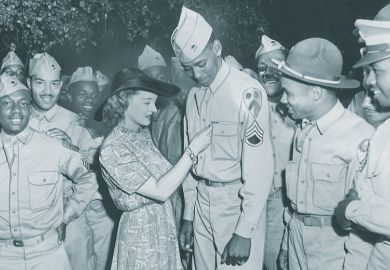This book attempts a critical assessment of salient Japanese texts dealing with Japanese film culture, from the Manchurian incident of 1931 to defeat in the Pacific war in 1945. The analysis is supported by critical readings of representative films from the period.
An introductory chapter locates the subsequent discussion within an underlying western-centric discourse that measures the "pathology" of the defeated "other" against the "morality" of the victorious. As Peter High explains, "a key issue addressed in this book is how (meaning, by what process) so many individuals - many of them as alert, broadminded and cosmopolitan as the best of us today - were induced to put their creative talents and inspiration in service to a regime that utterly rejected the rational tenets they once believed". A few pages later he writes, "most of the era's artists and intellectuals lacked ideological certainty and thus were particularly susceptible to the prevailing mood of anxiety and moral confusion" - a salient issue for many of us confronted by the recent war in Iraq.
The introduction continues with a review of Japanese scholarship, which is generally found wanting, providing the justification for this new book.
However, a close reading of the following 14 chapters reveals a painstaking, and often sympathetic, English-language transliteration of the dominant interpretative paradigms employed by many Japanese film-makers and scholars in assessing the relationship of Japanese film culture to the sociopolitical context of its production and reception.
From an initial analysis of the increasing bureaucratic constraints imposed on the film industry in the 1930s culminating in the promulgation of the infamous Film Law of 1939, High proceeds to a detailed discussion of a social conception of "modernity" as a progressive force to its abnegation as "Americanism" in the late 1930s. These early chapters focusing on the industry, regulation and society are followed by chapters taking up an analysis of the "humanist" war films of directors such as Tasaka Tomotaka and the reappropriation of history in the "spiritualist" films of, among others, Kumagai Hisatora.
High then shifts the geographical context of the discussion to mainland China and the establishment of the Manchurian Film Company (Man'ei) in the puppet state of Manchukuo. The later chapters return again to domestic production and the relationship between the industry and bureaucracy and the events that led to the virtual nationalisation of the industry in the early 1940s. Comparisons are drawn with German film policy and films of the period, supported by quotations from Siegfried Kracauer.
The key point in explaining the paradox set out in the introduction comes when High quotes from Iwasaki Akira's astute reflections on the war:
"Without a doubt every last one of them (Ozu, Tasaka, Uchida and various other film artists) harbored strong moral qualms about war. But once the artillery opened up in foreign fields, they rallied to support the war. It wasn't that they had been forcefully drafted into the war effort. Rather, they gave of themselves freely, feeling it their duty as subjects of the state."
The Imperial Screen draws on a wide variety of source materials and is one of the first studies in English to attempt such a broad survey of the period. But there are an unacceptably high number of errors in the transliteration of Japanese names from the kanji (Chinese characters); always a problem for the western scholar. For example, High transliterates Iwase Akira as Iwase Toru, and certain directors are given incorrect readings: Nomura Hiromasa is transliterated as Nomura Kosho, Yoshimura Kozaburo as Yoshimura Misao. In many other instances, a glance at Donald Richie's latest English-language history of the Japanese cinema would have easily rectified these errors. Such carelessness undermines the confidence of this reader in a book based largely on Japanese-language source material and greatly weakens its potential impact.
Isolde Standish is lecturer in Japanese film studies, School of Oriental and African Studies, London.
The Imperial Screen: Japanese Film Culture in the Fourteen Years' War, 1931-1945
Author - Peter B. High
Publisher - University of Wisconsin Press
Pages - 586
Price - £48.95 and £20.00
ISBN - 0 299 18130 8 and 18134 0
Register to continue
Why register?
- Registration is free and only takes a moment
- Once registered, you can read 3 articles a month
- Sign up for our newsletter
Subscribe
Or subscribe for unlimited access to:
- Unlimited access to news, views, insights & reviews
- Digital editions
- Digital access to THE’s university and college rankings analysis
Already registered or a current subscriber? Login



